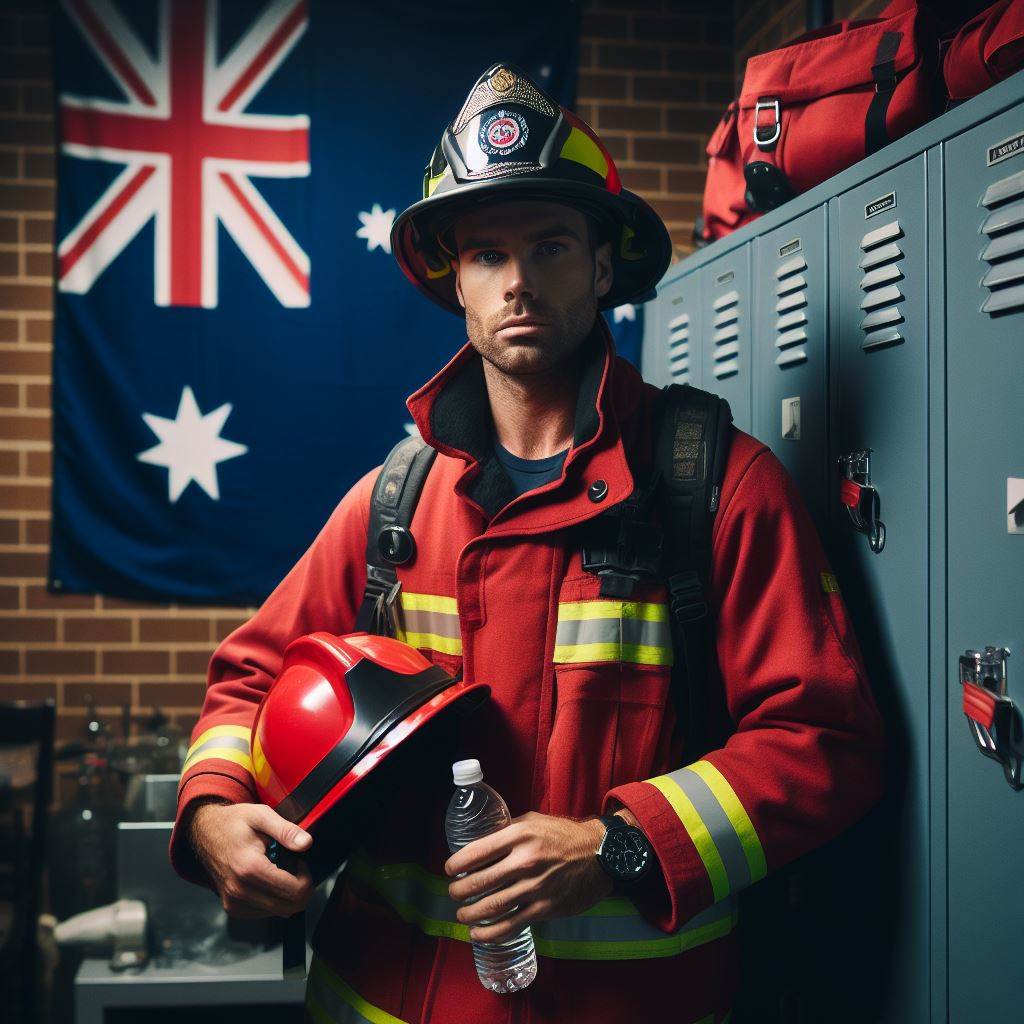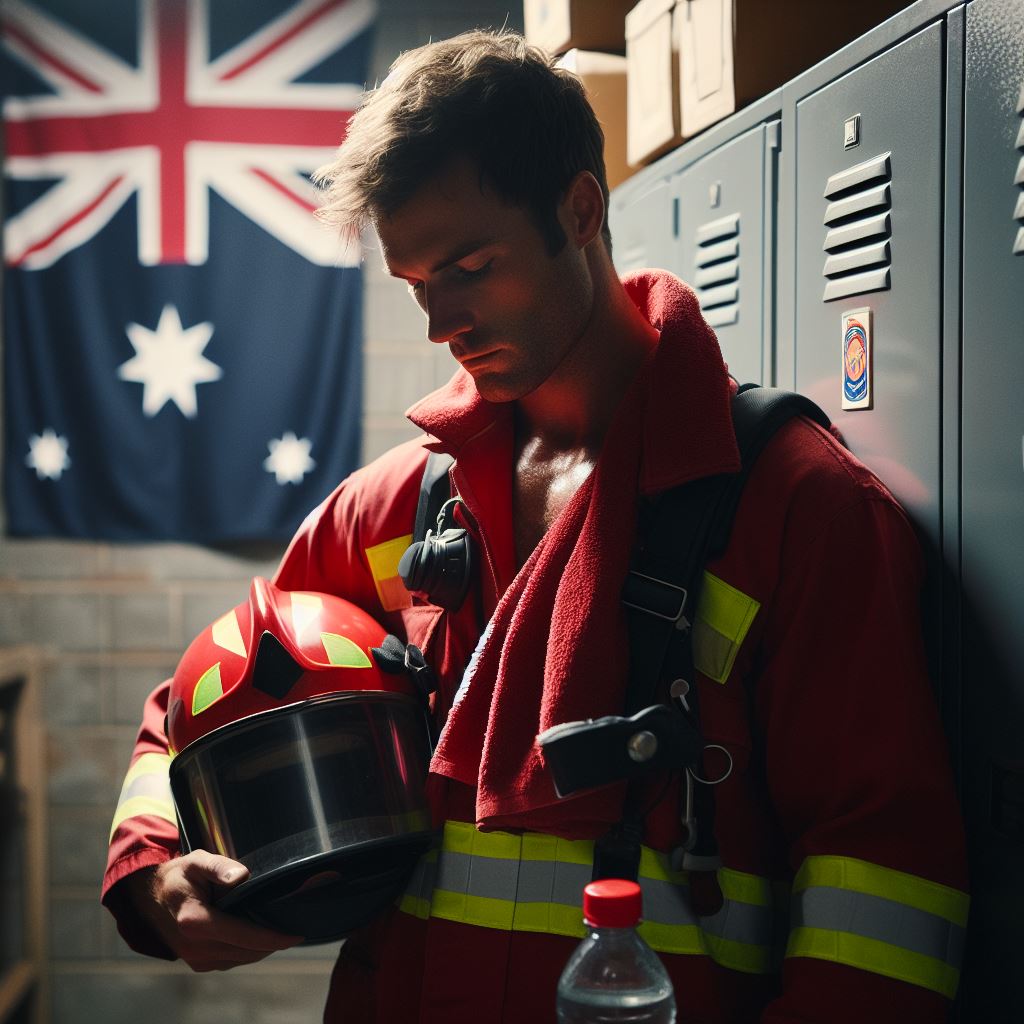Introduction
Delving into the dynamic world of firefighting gear unveils a sophisticated ensemble designed for the most challenging environments.
As we embark on this exploration, it becomes evident that comprehending the intricacies of what firefighters wear goes beyond mere curiosity; it’s a crucial understanding for safety reasons.
Firefighting gear is not just a uniform; it’s a meticulously engineered shield against the ferocity of flames.
This section aims to unravel the layers, from the outermost protective garments to the specialized equipment beneath.
Beyond aesthetics, each component serves a vital role in ensuring the safety and effectiveness of firefighters in the line of duty.
By gaining insights into the functionality and significance of their gear, we empower ourselves to appreciate the gravity of their tasks.
This knowledge fosters a deeper connection with the challenges firefighters face, highlighting the importance of their attire in safeguarding lives and combating the unpredictable nature of fire emergencies.
Historical Background
In early days, firefighters donned thick leather coats and brass helmets for protection against flames and burns.
Advances in materials during the 19th century introduced wool and rubber coats, improving insulation.
Helmets evolved from brass to modern heat-resistant designs.
Specialized gloves and boots enhanced overall safety.
The 20th century saw revolutionary gear improvements, including the self-contained breathing apparatus (SCBA), providing clean, breathable air and protection from toxic gases.
Nomex, a flame-resistant material, became a standard component in the 1960s, offering superior heat and flame resistance.
The 1980s brought fire-resistant fabrics and thermal barriers, introducing lightweight and breathable materials like Kevlar and PBI.
Modern gear integrates advanced technologies such as moisture-wicking fabrics and thermal imaging cameras.
It ensures maximum safety and effectiveness, significantly reducing injuries and improving firefighting capabilities.
Designed to protect from heat, flames, and hazardous chemicals, modern gear integrates communication devices and GPS technology.
Reflective strips enhance visibility during emergencies.
Firefighting gear, continuously evolving with new materials and technologies, prioritizes optimal safety for firefighters.
In short, the history of firefighting gear showcases remarkable advancements, enabling more effective firefighting and minimizing injury risks.
The ongoing evolution ensures firefighters are equipped with the best protection in their dangerous line of work.
Read: Public Service Internships: A Starter Guide
Personal Protective Equipment (PPE)
Personal Protective Equipment (PPE) is vital in firefighting, offering crucial protection against various hazards.
Components include a fire helmet, fire-resistant hood, gloves, boots, pants, and jacket.
The fire helmet shields the head from falling debris and extreme heat, made of heat-resistant materials.
A fire-resistant hood protects the neck and head, reducing heat-related injuries and burns.
Essential fire-resistant gloves safeguard hands from burns and sharp objects, crafted from fire-resistant materials like leather or Kevlar.
Specially designed fire-resistant boots shield feet from burns, punctures, and slipping, made of heat-resistant leather with non-slip soles.
Fire-resistant pants and jackets, usually of materials like Nomex or Kevlar, provide protection against flames and heat.
Reflective strips on the jacket enhance visibility in dark or smoky environments.
These components collectively ensure firefighter safety and well-being in hazardous situations, acting as a barrier against physical injuries and exposure to toxic substances.
Additional protective gear, like chemical-resistant suits for specific situations, may also be worn.
PPE components undergo careful design, testing, and adherence to safety standards.
Regular inspection, maintenance, and proper use are crucial for effectiveness.
Firefighting gear continually evolves, with advancements in materials and design to enhance protection.
Firefighters receive rigorous training on PPE use, maintenance, and understanding its importance in ensuring safety.
Read: The Future of Government Employment
Fire Helmets
Fire helmets are an essential piece of gear for firefighters, providing protection and functionality in hazardous situations.
Purpose and Features
- Fire helmets serve to protect firefighters’ heads from falling debris and heat exposure.
- They also aid in maintaining visibility with built-in face shields or goggles.
- Some helmets feature reflective stripes for increased visibility in low-light conditions.
- Many fire helmets have a chin strap to ensure a secure fit during strenuous activities.
- Additionally, they often come with a brim to shield the face from direct sunlight or rain.
Materials Used
- Traditional fire helmets were made from leather, which offered moderate protection against heat.
- Modern fire helmets are constructed from thermoplastic, fiberglass, or a composite material to enhance durability.
- These materials provide increased resistance to impact, heat, and electrical hazards.
- Modern helmets also have heat-resistant padding to absorb sweat and improve comfort.
Types of Fire Helmets
- Traditional fire helmets, also known as “New Yorker-style,” have a rounded design with a brim.
- Modern fire helmets, or “European-style,” have a sleeker, more streamlined appearance.
- Wildland fire helmets have a wide brim all around to protect against radiant heat and falling debris.
- Structural fire helmets are specifically designed for handling indoor fires, featuring robust impact resistance.
- Industrial fire helmets are reinforced to withstand extreme heat and are commonly used in chemical plants or refineries.
Advancements and Special Features
- Modern fire helmets often include integrated communication systems for better coordination during operations.
- Some helmets have built-in thermal imaging cameras to help locate victims or identify hot spots.
- Specialized helmets for technical rescue operations may have attachments for headlamps or breathing apparatus.
- Newer models offer modular designs, allowing firefighters to attach accessories like visors or hearing protection.
- Recent advancements in material technology have resulted in lighter helmets without compromising safety.
Generally, fire helmets are crucial protective gear for firefighters, offering various features and advancements to ensure their safety in dangerous situations.
From traditional leather helmets to modern, high-tech designs, these helmets continue to evolve and improve, enabling firefighters to perform their duties more effectively.
Read: Innovations in Australia’s Public Sector

Fire-Resistant Clothing
Importance of fire-resistant clothing in firefighting
Fire-resistant clothing is crucial in firefighting as it protects firefighters from extreme heat and burns.
Fire-resistant clothing is made from materials such as Nomex, Kevlar, and PBI fiber.
The materials used to make fire-resistant clothing
These materials have excellent heat and flame resistance properties, providing firefighters with vital protection.
Nomex is resistant to flames and does not melt or drip, making it ideal for firefighting gear.
Kevlar is known for its strength and durability. It offers excellent protection against cuts and abrasions.
PBI fiber is highly resistant to heat and flames. It does not shrink or melt when exposed to extreme temperatures.
The design and features of fire-resistant pants and jackets
Fire-resistant pants and jackets are designed to provide maximum protection in firefighting situations.
Your Personalized Career Strategy
Unlock your potential with tailored career consulting. Get clear, actionable steps designed for your success. Start now!
Get StartedThey feature multiple layers of fire-resistant materials to enhance insulation and prevent heat transfer.
The design includes reinforced stitching, which adds strength and durability to withstand tough conditions.
Pants often have adjustable suspender systems and knee reinforcements for added comfort and protection.
Jackets have wrist cuffs and adjustable closures to keep out flames and heat.
The importance of proper fit and sizing for firefighter clothing
Proper fit and sizing are of utmost importance when it comes to firefighter clothing.
Ill-fitting gear can restrict movement, hinder performance, and compromise firefighter safety.
Sizing charts and guidelines provided by manufacturers help ensure the right fit for each firefighter.
Fire-resistant clothing should not be too loose or too tight, as both can be dangerous in firefighting situations.
Loose clothing may catch on objects or create a hazard, while tight clothing may limit mobility.
Firefighters need to have freedom of movement to perform their duties effectively and efficiently.
Additionally, proper fit reduces the risk of exposed skin, minimizing the potential for burns.
Firefighter clothing should allow for flexibility and the ability to wear other protective equipment comfortably.
Maintaining and inspecting fire-resistant clothing regularly is essential to ensure its effectiveness.
Garments should be checked for any signs of wear and tear, such as holes, fraying, or damaged closures.
Stand Out with a Resume That Gets Results
Your career is worth more than a generic template. Let us craft a resume and cover letter that showcase your unique strengths and help you secure that dream job.
Get HiredAny damaged or compromised clothing should be replaced promptly to maintain optimum protection levels.
All in all, fire-resistant clothing plays a vital role in protecting firefighters from heat and burns.
Materials like Nomex, Kevlar, and PBI fiber provide excellent resistance to flames and extreme temperatures.
The design and features of fire-resistant pants and jackets enhance firefighter safety and performance.
Proper fit and sizing are crucial to ensure optimum protection and unrestricted mobility.
Regular maintenance and inspection of fire-resistant clothing are essential to preserve its effectiveness.
Read: Emerging Trends in Policy Analysis in AU
Find Out More: Education Paths for Aspiring Politicians
Learn More: Australian Police and Community Relations
Additional Gear and Equipment
In addition to the basic firefighting gear, firefighters also wear various additional gear and equipment:
- Fire-resistant hoods: These hoods provide extra protection for the firefighter’s head and neck.
- Fire-resistant gloves: These gloves are essential for protecting the hands from burns and injuries.
- Fire-resistant boots: These boots are specially designed to provide maximum protection against heat and flames.
- Self-contained breathing apparatus (SCBA): SCBA units supply firefighters with clean air to breathe in hazardous environments.
- Communication devices: Firefighters use communication devices to maintain constant contact with their team and the command center.
The purpose and importance of each item
Additional gear, like fire-resistant hoods, gloves, boots, SCBA units, and communication devices, enhances firefighter safety and efficiency.
Fire-resistant hoods, made from special materials, withstand high temperatures, providing extra protection for the head and neck against heat, flames, and debris.
These hoods minimize burn risks and prevent inhaling toxic gases.
Essential for handling hot objects and sharp debris, fire-resistant gloves are heat-resistant and offer a strong grip.
They enable firefighters to perform tasks effectively, protecting hands from burns and cuts.
Specially designed fire-resistant boots withstand intense heat, shielding feet from burns and puncture wounds.
Equipped with steel toes and slip-resistant soles, these boots ensure stability in hazardous environments.
A critical piece for smoke-filled areas, the self-contained breathing apparatus (SCBA) supplies clean, breathable air to firefighters.
Consisting of a mask, air tank, and regulator, it reduces smoke inhalation risks and related health issues.
Communication devices, including radios and microphones, are crucial for effective firefighting communication.
Firefighters use them to relay information, coordinate actions, and stay connected with their team and the command center.
Clear and reliable communication is vital for ensuring safety and efficiency in firefighting efforts.
In summary, firefighters rely on various additional gear to enhance safety and effectiveness in operations, including fire-resistant hoods, gloves, boots, SCBA units, and communication devices, all critical components for minimizing injury risks and maximizing operational efficiency.
See Related Content: Diplomatic Language Skills Essentials
Find Out More: Women in Australian Law Enforcement
Conclusion
In the intricate world of firefighting, understanding the nuances of gear becomes not just an exploration but a crucial acknowledgment of the thin line between safety and peril.
Properly comprehending firefighting gear’s intricacies unveils its pivotal role in safeguarding the lives of those who bravely battle infernos.
The essence of firefighter safety lies in the meticulous selection and utilization of gear.
It is more than just attire; it’s a shield against the relentless force of flames, a guardian in the face of unpredictable hazards.
The commitment and resilience of firefighters are embedded in every layer of their protective ensemble.
As readers, let’s not merely acknowledge but wholeheartedly appreciate the dedication woven into each fiber of their gear.
It’s a commitment to community safety, an oath to stand tall amidst the scorching challenges.
Understanding firefighting gear is not just awareness; it’s a call to recognize the silent heroes clad in protective layers, ready to face the unknown for the greater good.
Transform Your LinkedIn for Maximum Impact
Elevate your professional brand with a LinkedIn profile that attracts recruiters, showcases your expertise, and maximizes opportunities. Stand out in your industry with a profile built for success.
Boost Profile



